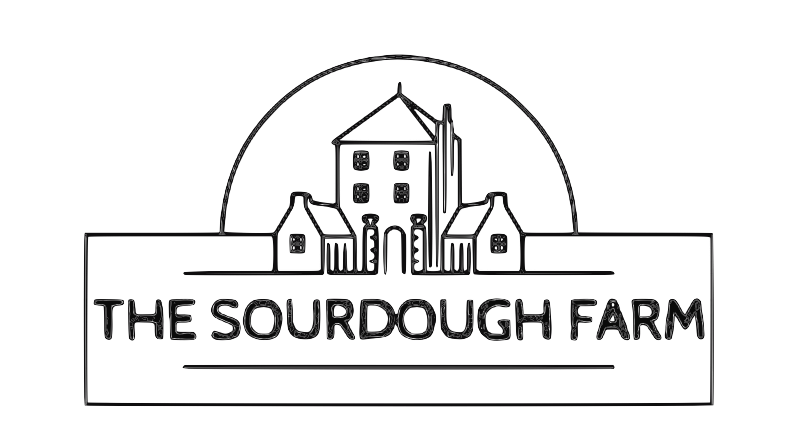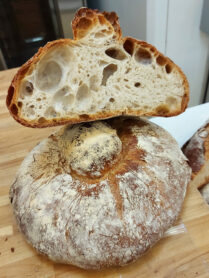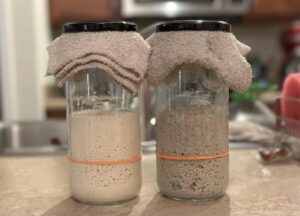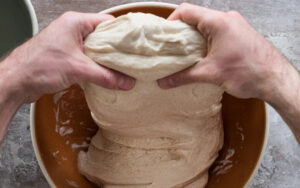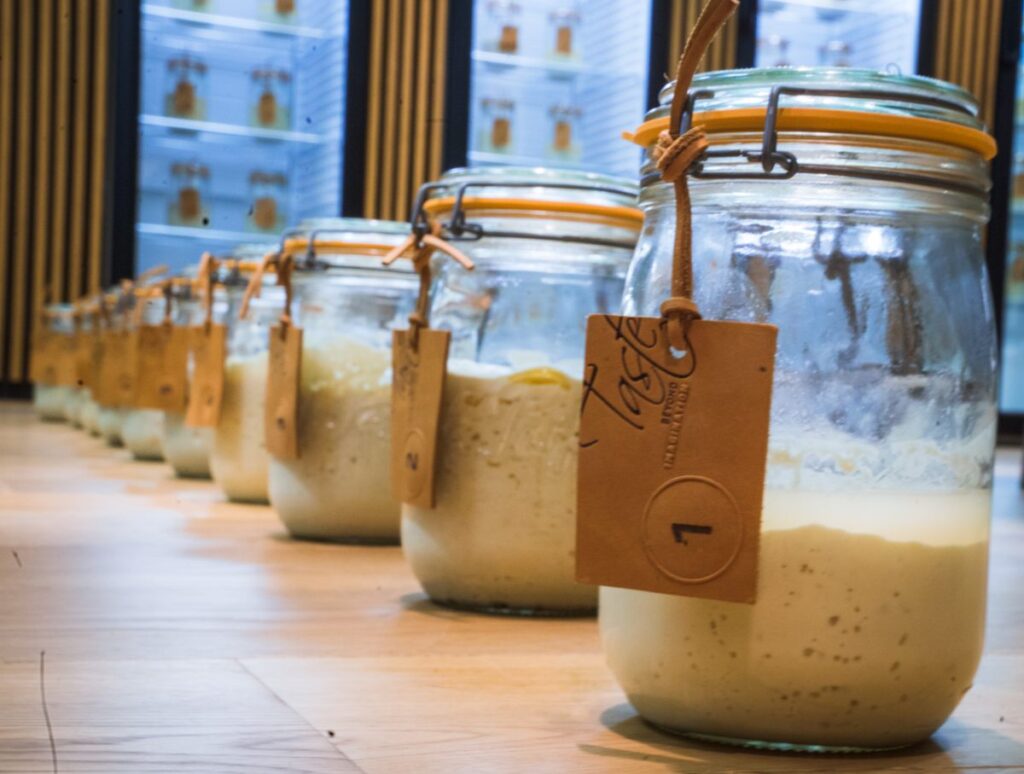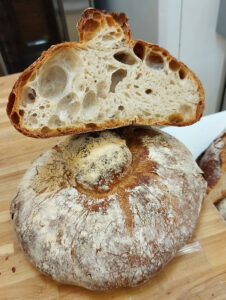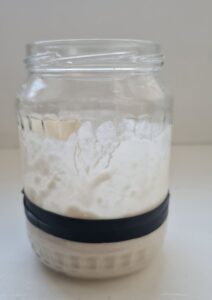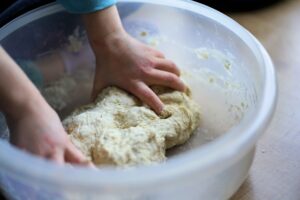Flour, water, and salt. This simple list of ingredients is the starting point for countless traditional and some more modern breadmaking techniques. Despite the growing prevalence of packaged and frozen bread, in Galicia bakers in hundreds of small bakeries work with skill and innovation to ensure the survival of good quality bread. Galicia is located in the green and lush northwestern corner of Spain. Geographically, Galicia is situated just above Portugal and faces both the Atlantic Ocean and the Cantabrian Sea. 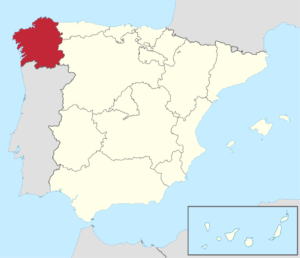 Galicia’s breadmaking tradition originated far away and has shaped the region’s landscape. Following the discovery of America, wheat and rye fields grew alongside corn, which has had a huge impact on this area. At the time, grain was ground and stored in hórreos: raised grain stores that protect the grain from rodents while keeping it ventilated. The size of an hórreo symbolized the wealth of its owner.
Galicia’s breadmaking tradition originated far away and has shaped the region’s landscape. Following the discovery of America, wheat and rye fields grew alongside corn, which has had a huge impact on this area. At the time, grain was ground and stored in hórreos: raised grain stores that protect the grain from rodents while keeping it ventilated. The size of an hórreo symbolized the wealth of its owner.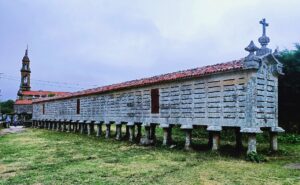
The grain was ground into flour in one of the thousands of watermills located on the banks of streams and rivers, such as these ones in O Folón. Mills have been a central part of Galician culture: they were meeting points and are the subject of several traditional songs, known as “coplas”. The most famous traditional Galician dance is called a muiñeira (mill owner). It was common for families to make their own bread. They kneaded the dough in a kneading trough and baked it in a stone oven, which was often a room in the house.
The qualities of Galician bread are not the exclusive preserve of any particular town. The bread has certain characteristics that are found across the entire region; an unmistakable flavor that is mainly due to the variety of wheat known as “trigo país”, which is traditionally grown in Galicia. Bread with the protected geographical indication of Galician bread must contain at least 25% of this variety of flour (fariña do país). Also characteristic of Galician Bread is its high hydration (greater than 85%) and, therefore, spectacular alveoli and a great lightness of the crumb.
In this recipe, we have used a 100% hydration as the traditional recipe reads. We have also fed the night before our San Francisco sourdough starter and refreshed it in the early morning to have a very active starter.
Dough:
- San Francisco starter (100% hydration) (88.1g, 25%)
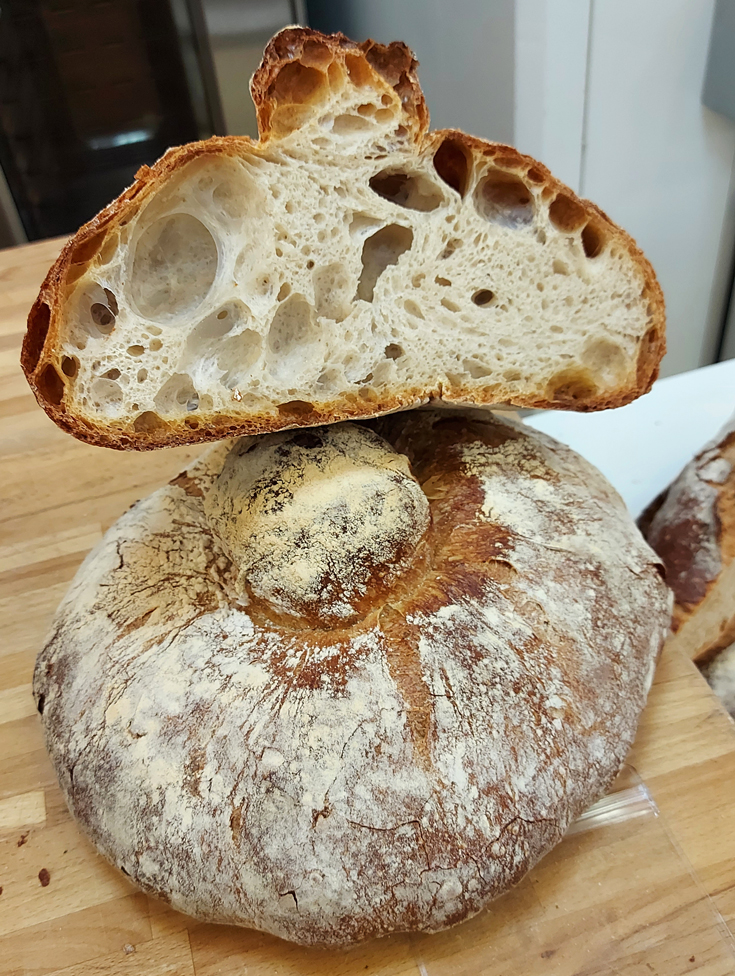
- Strong wheat flour (317.2g, 90%)
- Dark Rye flour (35.2 g, 10%)
- Fresh water (352.4g, 100%)
- Salt (7g, 2%)
STEP 1: Place the flours into a large bowl and mix.
STEP 2: Combine about 80% of the water with the flour leaving the mixture to rest for 1h (Autolysis).
STEP 3: Add the stater to the water left (20% of the total) and mix with the rest of the dough until it has been completely integrated. Let it rest for another hour.
STEP 4: Add the salt. Squeeze the salt into the dough until incorporated and you have a smooth surface.
STEP 5: Complete a total of three stretches and folds every 30 minutes.
STEP 6: Lamination. Laminate the dough and let it rest for 45 minutes. After that, perform a coil fold.
STEP 7: Let the dough rise for 4 hours. When this initial fermentation is complete, you will notice a smooth, bubbly surface. Cover the dough and refrigerate it for 14 to 16 hours.
STEP 8: Place a Dutch oven into a cold oven. Then, proceed to preheat the oven for 30 to 45 minutes at 450°F (230°C). Bake at 230°C for 20 minutes with the lid on. Reduce the temperature to 210°C, remove the lid and bake for another 20 minutes.
